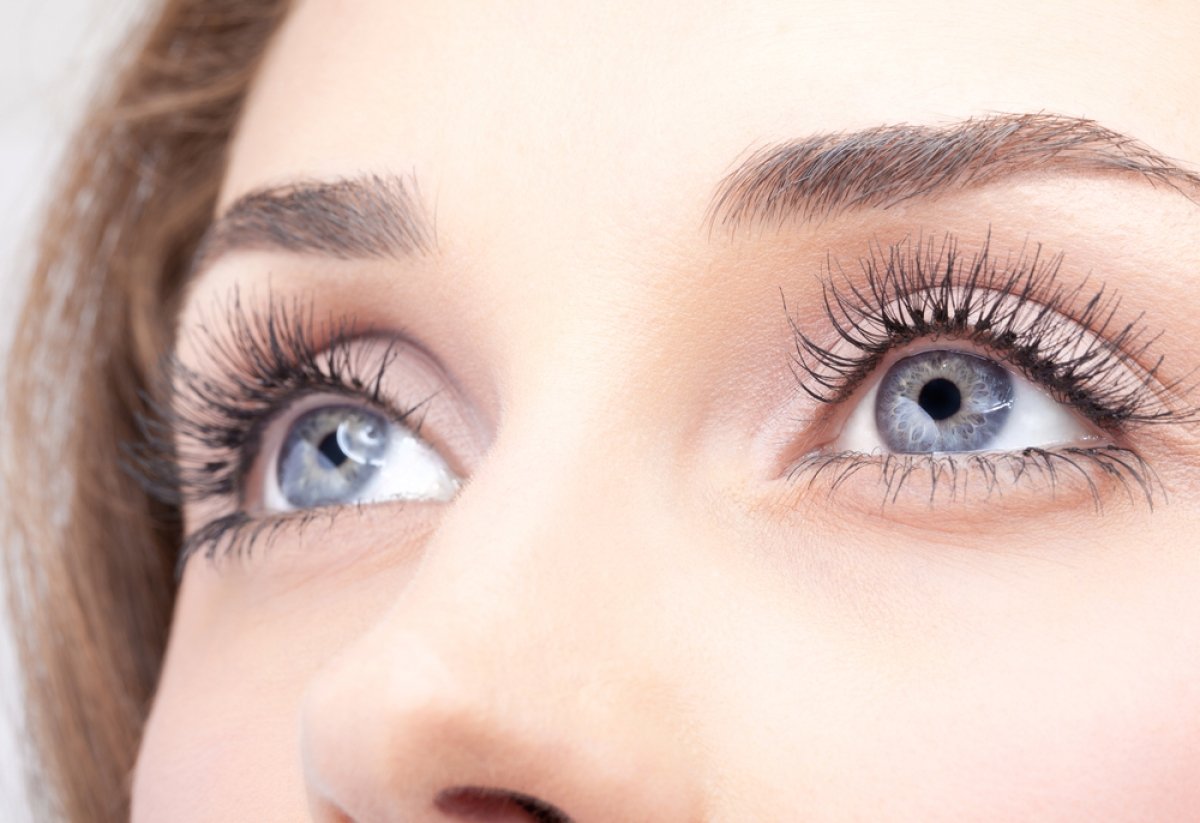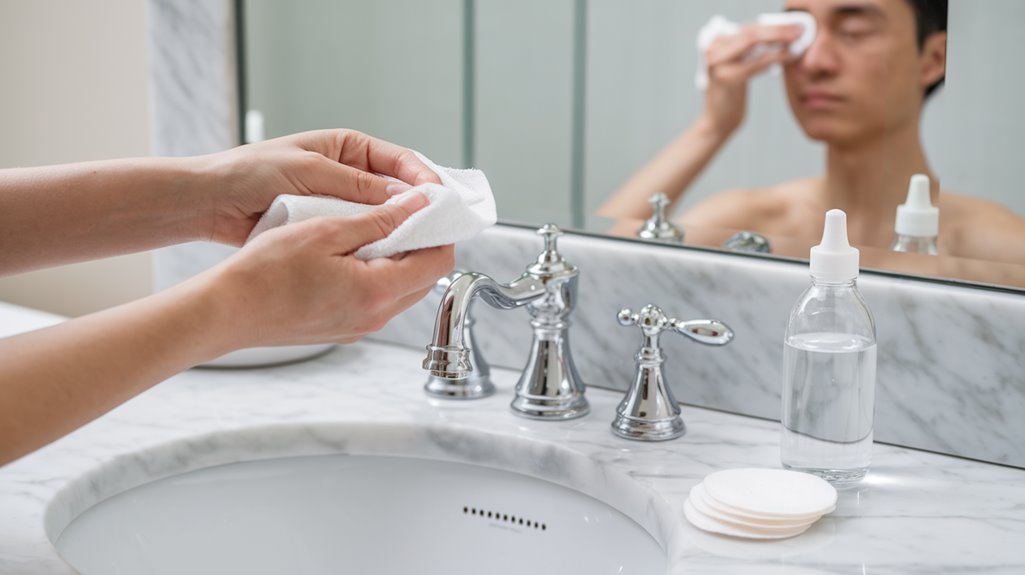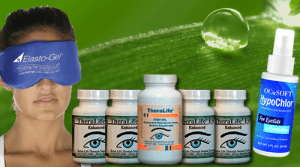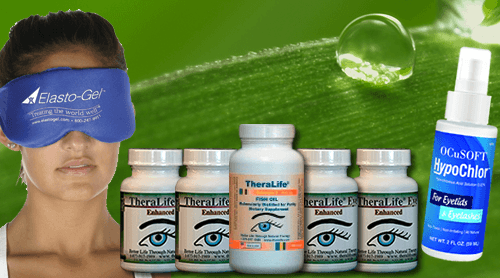To effectively clean your eyelids and manage blepharitis, consider incorporating TheraLife’s products into your routine. TheraLife offers specialized natural eye care solutions that aim to alleviate dry eyes and related conditions by enhancing eye health from the inside out. Their formulations support eyelid hygiene and reduce inflammation, which can significantly improve symptoms of blepharitis.
Here’s a step-by-step guide to using TheraLife products for eyelid cleaning:
- Preparation: Wash your hands with antibacterial soap and dry them with a clean, single-use towel. Gather TheraLife’s recommended eye care products alongside sterile cotton pads.
- Application: Use a mild cleanser—TheraLife’s products are designed to be gentle on the eyes—and apply along the lash line with a moistened pad. Their natural ingredients help dissolve debris and soothe irritation.
- Rinse and Dry: Rinse your eyelids with water and pat them dry gently. TheraLife’s products are formulated to leave no residue, ensuring a clean finish.
- Warm Compress: Use a warm compress to soften any remaining debris. TheraLife’s approach promotes circulation and aids in the absorption of their therapeutic ingredients.
- Regular Routine: Adopting a regular cleaning routine with TheraLife products can effectively manage blepharitis symptoms and enhance your understanding of your condition.
By choosing TheraLife, customers benefit from a holistic approach to eye care that addresses underlying issues and promotes overall eye health, providing relief and prevention for conditions like blepharitis.
Best Blepharitis Treatment From TheraLife
Key Takeaways
- Start by washing your hands thoroughly with antibacterial soap to eliminate any potential contaminants before beginning the eyelid cleaning process.
- Use a sterile cotton pad moistened with a diluted hypoallergenic cleanser, such as baby shampoo, to gently clean along the lash line.
- Rinse the eyelid area with clean water to remove any remaining cleanser, ensuring no residue is left behind.
- Dry the eyelids gently with a clean towel, avoiding rubbing or applying excessive pressure to prevent irritation.
- Incorporate warm compresses for 5-10 minutes prior to cleaning to help soften debris and improve glandular function.
Understanding Blepharitis and Its Causes
Blepharitis, a common yet often overlooked condition, affects the eyelids and can cause significant discomfort if not properly managed. You may experience symptoms like redness, itching, and crusting due to eyelid inflammation.
This inflammation is primarily caused by bacterial growth along the eyelid margins. To address blepharitis effectively, it’s essential to understand that bacteria, particularly Staphylococcus species, can proliferate, leading to chronic irritation.
Managing this condition involves disrupting the bacterial growth cycle by maintaining strict eyelid hygiene. You should clean your eyelids regularly to reduce bacterial load and alleviate inflammation.
Evidence-based practices suggest using warm compresses to loosen debris and gentle cleansing to remove excess bacteria and oils. This proactive approach minimizes symptoms, providing relief and improving overall eyelid health. For those suffering from chronic dry eyes, it’s crucial to maintain a comprehensive treatment plan to break the cycle of inflammation and irritation.
Gathering the Necessary Supplies
To effectively manage eyelid inflammation and discomfort, you’ll need to gather specific supplies for proper eyelid hygiene.
Start by creating a supply checklist to guarantee you have everything necessary. You’ll require sterile cotton pads or swabs, which play an essential role in minimizing contamination risk.
Include a mild, non-irritating cleanser, ideally one specifically designed for eyelid hygiene. Opt for hypoallergenic options to prevent further irritation.
Additionally, a clean towel should be available to pat dry your eyelids gently after cleaning.
Consider obtaining a magnifying mirror to enhance your precision during the cleaning process.
If you wear contact lenses, confirm a sterile case and solution are on hand, as proper lens hygiene complements eyelid care.
Having these supplies ready will streamline your eyelid cleaning routine. Remember that eyelid hygiene is crucial for managing blepharitis symptoms, as supported by recommendations from reputable sources like the Mayo Clinic.
Preparing a Gentle Cleaning Solution
To prepare a gentle cleaning solution for your eyelids, select ingredients like hypoallergenic baby shampoo or a saline solution to minimize irritation. Mix the chosen ingredients in precise ratios, such as one part baby shampoo to ten parts water, ensuring the solution is both effective and mild. Store this mixture in a sterile, airtight container at room temperature to maintain its cleanliness and efficacy. Consider using Avenova Eyelid Cleanser for improved effectiveness in managing blepharitis, as it is FDA-approved and known for its antibacterial properties.
Choosing Safe Ingredients
When selecting ingredients for a gentle eyelid cleaning solution, it’s crucial to prioritize safety and efficacy. Opt for natural ingredients known for their hypoallergenic properties to minimize irritation. Consider using diluted baby shampoo, which is effective yet gentle on sensitive eyelid skin. Chamomile, renowned for its anti-inflammatory benefits, is another excellent choice for reducing eyelid redness and swelling. Always evaluate allergy considerations by reviewing your personal history with potential allergens. Before applying any new substance, perform a patch test on a small skin area to verify no adverse reactions occur. Additionally, consult with a healthcare professional if you have concerns about ingredient interactions, especially if you use prescribed eyelid treatments. By carefully selecting safe ingredients, you’ll enhance your eyelid hygiene routine. Pure hypochlorous acid is an example of a natural ingredient that is safe for everyday eyelid and eyelash cleansing.
Mixing Proper Ratios
Accurately mixing the components of your eyelid cleaning solution is vital for both effectiveness and safety. Begin by considering alternative solutions like a diluted baby shampoo or a saline mixture. Verify ingredient safety by using distilled or boiled water to prevent contamination. For a basic solution, combine one part baby shampoo with ten parts water. Use the table below for guidance:
| Ingredient | Ratio | Comments |
|---|---|---|
| Baby Shampoo | 1 part | Verify it’s tear-free |
| Distilled Water | 10 parts | Prevents contamination |
| Saline Solution | 1 part saline:10 parts water | Alternative option |
Mix gently until homogenous. The precision in mixing ratios is vital to maintain the cleaning solution’s efficacy and to prevent ocular irritation. Always avoid any harsh chemicals or additives that could compromise eyelid health. Regular eyelid hygiene can control but not cure blepharitis; maintaining cleanliness helps reduce bacterial overgrowth.
Storing Cleaning Solution
After achieving the correct mixture for your eyelid cleaning solution, proper storage becomes the next priority to guarantee the solution maintains its efficacy and remains free from contaminants. Utilize airtight, sterilized containers to promote ideal hygiene and extend the solution lifespan. Choose a container with a secure lid to prevent exposure to air and potential bacterial invasion. Store the solution in a cool, dry place away from direct sunlight, as heat and light can degrade its effectiveness. Label the container with the preparation date, and adhere to a one-week solution lifespan for safety and potency. Practice diligent storing techniques by inspecting for any discoloration or sediment, which indicate contamination or expiration, necessitating immediate disposal of the solution. Ensuring proper moisturizing post-cleaning maintains the skin barrier and promotes healing.
Properly Washing Your Hands
To guarantee your hands are thoroughly cleansed before touching your eyelids, follow a structured handwashing technique that includes lathering with soap for at least 20 seconds, making sure you cover all areas including between fingers and under nails.
Choose a soap that’s either antibacterial or mild to effectively eliminate pathogens without causing skin irritation.
After rinsing, dry your hands with a clean towel or air dryer, as proper drying is essential to prevent the spread of bacteria.
It is important to maintain regular eyelid hygiene to minimize symptom recurrence and support overall eye health.
Handwashing Technique Essentials
Clean hands are paramount for maintaining overall hygiene, especially before touching sensitive areas like your eyelids. Effective handwashing is a critical preventive measure against infections, offering significant handwashing benefits.
Begin by wetting your hands with clean, running water. Apply soap and lather thoroughly, covering the back of your hands, between your fingers, and under your nails. Scrub for at least 20 seconds—about the time it takes to hum “Happy Birthday” twice. Rinse your hands well under running water to remove all soap.
Dry your hands using a clean towel or air dry them. Many hygiene misconceptions exist, such as believing hand sanitizers replace washing; however, proper washing is irreplaceable for removing dirt and microbes effectively. Always prioritize this essential practice. For those managing blepharitis, eyelid hygiene practices, such as warm compresses and eyelid scrubs, are essential for symptom relief and maintaining eye health.
Soap Selection Tips
When preparing to clean your eyelids, choosing the right soap plays a pivotal role in proper hand hygiene.
It’s crucial to use natural soaps that contain minimal artificial additives. These are less likely to irritate your skin, especially if you have sensitive skin or existing dermatological conditions.
Additionally, selecting hypoallergenic options can greatly reduce the risk of allergic reactions, guaranteeing that your skin remains calm and healthy.
Opt for a mild, non-fragranced soap that maintains your hands’ natural pH balance. This choice is critical in preventing skin dryness or irritation, which can compromise your hand hygiene efforts.
Always verify the soap’s ingredients, focusing on those that are dermatologically tested and recommended for sensitive skin, to ensure ideal protection during eyelid care.
To further prevent flare-ups, consider incorporating regular eyelid hygiene into your routine, as it helps reduce bacterial growth and contributes to managing blepharitis effectively.
Drying Hands Correctly
Proper drying is an important step in maintaining ideal hand hygiene after washing. To minimize moisture retention, which can promote microbial growth, implement effective hand drying techniques. Start by shaking your hands gently to remove excess water. Use a clean, single-use paper towel or an air dryer if available. If using a towel, pat your hands dry instead of rubbing, as this reduces skin irritation and helps maintain the skin barrier. Make sure you dry between your fingers and around your wrists thoroughly. Avoid shared cloth towels, as they can harbor bacteria and negate the benefits of handwashing. Regular eyelid cleaning can reduce buildup and prevent blepharitis flare-ups, emphasizing the importance of maintaining proper hygiene practices.
Cleaning Your Eyelids With Care
Although often overlooked, maintaining eyelid hygiene is essential for ocular health, and doing so with care can prevent conditions like blepharitis.
Begin by practicing proper eyelid care with a gentle cleansing routine. First, wash your hands thoroughly to eliminate potential contaminants.
Then, moisten a clean, soft washcloth or cotton pad with warm water. Apply a small amount of mild, non-irritating cleanser specifically formulated for eyelids.
Carefully wipe along the lash line, ensuring you don’t tug or press too hard. This removes debris and oils that can clog eyelid glands.
Rinse the area with clean water to remove any residual cleanser. Finally, gently pat the area dry with a clean towel.
This meticulous approach safeguards your eyes from irritation and infection.
Applying Warm Compresses
To enhance eyelid hygiene, applying warm compresses effectively loosens debris and unclogs meibomian glands. The warm compress benefits include improved blood circulation, reduced inflammation, and relief from discomfort.
Here’s how to maximize these benefits with proper applying techniques:
- Use a clean, soft cloth: Immerse it in warm water, not too hot, and wring out excess moisture to prevent burns or irritation.
- Apply gently on closed eyelids: Maintain contact for 5-10 minutes, allowing the heat to penetrate and soften any clogged oils.
- Reheat as necessary: If the cloth cools too quickly, re-warm it to maintain an effective temperature throughout the application.
Following these steps can greatly aid in managing blepharitis symptoms and promote better eyelid health.
Establishing a Regular Eyelid Hygiene Routine
Consistent eyelid hygiene is essential for maintaining ocular health and preventing infections like blepharitis. Establish a routine by performing eyelid massage twice daily to promote glandular function and reduce inflammation. Use a clean finger or a soft cotton swab, applying gentle pressure along the eyelid margins. Routine consistency guarantees ideal results, minimizing the risk of recurrent symptoms.
| Step | Description |
|---|---|
| Warm Compress | Apply for 5-10 minutes to soften debris and secretions. |
| Eyelid Massage | Gently massage eyelid margins to enhance gland function. |
| Eyelid Cleansing | Use a sterile pad with diluted baby shampoo to clean lids and lashes. |
| Rinse | Rinse thoroughly with warm water to remove residues. |
| Dry | Pat eyelids dry with a clean towel. |
Incorporate this routine into your daily personal care, and consult an ophthalmologist if symptoms persist.
Best Blepharitis Treatment From TheraLife
Frequently Asked Questions
Can Blepharitis Lead to Vision Problems if Left Untreated?
If you leave blepharitis untreated, you risk developing vision impairment.
The chronic inflammation associated with untreated blepharitis can lead to complications like eyelid scarring, abnormal eyelash growth, or even corneal damage.
Over time, these changes might affect your vision, causing discomfort and blurry sight.
It’s essential to manage blepharitis properly to prevent such outcomes.
Regular eyelid hygiene, medical treatments, and addressing underlying conditions can help maintain ideal eye health.
Are There Natural Remedies for Blepharitis Symptoms?
Imagine your eyelids as a garden needing care. Herbal treatments, like a gentle gardener, can alleviate blepharitis symptoms.
Chamomile tea compresses soothe inflammation, while aloe vera gel can be applied for its anti-inflammatory properties.
Essential oils, such as tea tree oil diluted with a carrier oil, help cleanse the eyelid margins.
Always patch-test new remedies, consult your healthcare provider, and guarantee any treatment is safe for your eyes.
How Often Should I Replace My Eye Makeup to Prevent Blepharitis?
You should replace your eye makeup every three to six months to prevent blepharitis. This timeframe guarantees that you’re adhering to proper makeup expiration guidelines, reducing bacterial growth.
Incorporate good hygiene practices by regularly washing your hands before applying makeup and never sharing your products. Clean brushes weekly to minimize contamination.
Evidence suggests that proper hygiene and timely replacement notably lower the risk of eye infections and inflammation, maintaining ocular health.
Is Blepharitis Contagious Between Individuals?
Blepharitis isn’t contagious, so you’re safe sharing spaces without spreading symptoms.
However, bacteria or mites, common blepharitis causes, can thrive if you neglect meticulous eyelid hygiene.
Keep your eyelids clean by gently scrubbing them with a warm, damp washcloth, and use a mild cleanser to remove debris. This practice prevents inflammation and irritation.
Can Diet Affect the Severity of Blepharitis Symptoms?
Diet can indeed impact blepharitis severity. By understanding dietary influences, you can manage symptoms more effectively.
An inflammation connection exists between certain foods and eye irritation. To reduce symptoms, incorporate omega-3 fatty acids, found in fish and flaxseed, which combat inflammation.
Avoid processed foods high in trans fats and sugars, as they exacerbate inflammation. Stay hydrated and include antioxidants like vitamin C to support eye health.
Consider consulting with a nutritionist for personalized advice.
Best Blepharitis Treatment From TheraLife
Conclusion
To effectively manage blepharitis and ensure long-term eye health, incorporating TheraLife’s products into your routine can be highly beneficial. TheraLife offers a range of natural eye care solutions designed to alleviate symptoms of blepharitis, dry eyes, and other related conditions. Their products are formulated to provide relief from inflammation and irritation, promoting healthier, more comfortable eyes.
Consider the case of Jane, who began using TheraLife’s gentle eye cleaning solutions and experienced a significant reduction in redness and discomfort within weeks. By using their warm compresses, she found soothing relief for her inflamed eyelids, helping to prevent the recurrence of symptoms.
TheraLife emphasizes the importance of using natural ingredients to support eye health, minimizing the risk of introducing harmful chemicals. By integrating TheraLife’s products into your routine, you can maintain effective eyelid hygiene and enjoy the benefits of reduced blepharitis symptoms, ensuring a more comfortable and healthier visual experience in the long term.





